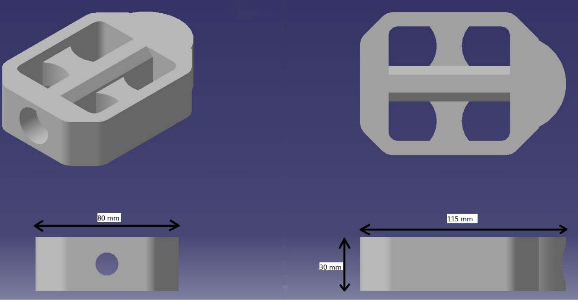J.M.Pearce (talk | contribs) (Created page with "{{MOST}} {{Pearce-pubs}} {{MOST-RepRap}} ==Source== * Tanikella, N.G., Savonen, B., Gershenson, J., Pearce, J.M. (2016). [https://www.ewb.org.au/jhe/index.php/jhe/article/vie...") |
J.M.Pearce (talk | contribs) m (→See Also) |
||
| Line 32: | Line 32: | ||
* [http://my3dmatter.com/influence-infill-layer-height-pattern/ What is the influence of infill %, layer height and infill pattern on my 3D prints?] | * [http://my3dmatter.com/influence-infill-layer-height-pattern/ What is the influence of infill %, layer height and infill pattern on my 3D prints?] | ||
* [http://st3p3d.com/blogs/3d-printing/14992261-a-few-ways-to-strengthen-3d-printed-parts A few ways to strengthen 3D printed parts] - STEP 3D (really nice summary of methods to strengthen parts) | * [http://st3p3d.com/blogs/3d-printing/14992261-a-few-ways-to-strengthen-3d-printed-parts A few ways to strengthen 3D printed parts] - STEP 3D (really nice summary of methods to strengthen parts) | ||
[[Category:MOST completed projects and publications]] | |||
[[Category:3D printing]] | |||
[[Category:DIY]] | |||
[[Category:Distributed manufacturing]] | |||
[[Category:Polymers]] | |||
[[Category:Plastic]] | |||
[[category:bicycles]] | |||
Revision as of 00:12, 9 December 2016
Source
- Tanikella, N.G., Savonen, B., Gershenson, J., Pearce, J.M. (2016). Viability of Distributed Manufacturing of Bicycle Components with 3-D Printing: CEN Standardized Polylactic Acid Pedal Testing. Journal of Humanitarian Engineering (in press). [open access]
Abstract

Recent advancements in open-source self-replicating rapid prototypers (RepRap) have radically reduced costs of 3-D printing. The cost of additive manufacturing enables distributed manufacturing of open source appropriate technologies (OSAT) to assist in sustainable development. In order to investigate the potential this study makes a careful investigation of the use of RepRap 3-D printers to fabricate widely used Black Mamba bicycle components in the developing world. Specifically, this study tests pedals. A CAD model of the pedal was created using parametric open source software (FreeCAD) to enable future customization. Then poly-lactic acid, a biodegradable and recyclable bioplastic was selected among the various commercial 3-D printable materials based on strength and cost. The pedal was 3-D printed on a commercial RepRap and tested following the CEN (European Committee for Standardization) standards for racing bicycles for 1) static strength, 2) impact, and 3) dynamic durability. The results show the pedals meet the CEN standards and can be used on bicycles. The 3-D printed pedals are significantly lighter than the stock pedals used on the Black Mamba, which provides a performance enhancement while reducing the cost if raw PLA or recycled materials are used, which assists in reducing bicycle costs even for those living in extreme poverty. Other bicycle parts could also be manufactured using 3-D printers for a return on investment on the 3-D printer indicating that this model of distributed manufacturing of OSAT may be technically and economically appropriate through much of the Global South.
See Also
- Mechanical Properties of Components Fabricated with Open-Source 3-D Printers Under Realistic Environmental Conditions
- The Effects of PLA Color on Material Properties of 3-D Printed Components
- Open source rapid prototyping of OSAT
- RepRap Mechanical Testing Literature Review
- Tensile_test_protocol:_MOST
- Environmental life cycle analysis of distributed 3-D printing and conventional manufacturing of polymer products
- Recyclebot
- Life cycle analysis of distributed recycling of post-consumer high density polyethylene for 3-D printing filament
- Recyclebot on RepRap wiki
- Mechanical testing of polymer components made with the RepRap 3-D printer
- Development and feasibility of applications for the RepRap 3-D printer
- Life cycle analysis of distributed polymer recycling
- Solar powered distributed customized manufacturing
- MOST RepRap Build
- Life cycle analysis of distributed polymer recycling
- Applications of RepRap distributed production - literature review
- What is the influence of infill %, layer height and infill pattern on my 3D prints?
- A few ways to strengthen 3D printed parts - STEP 3D (really nice summary of methods to strengthen parts)





